June 2, 2025 | 07:02 GMT +7
June 2, 2025 | 07:02 GMT +7
Hotline: 0913.378.918
June 2, 2025 | 07:02 GMT +7
Hotline: 0913.378.918
Unlike the fanfare of high-level conferences or political declarations, this partnership is quietly taking shape through the steady flow of containers across the Pacific. Standards between the two countries are becoming increasingly aligned, and meetings between their respective authorities are held regularly. Behind every shipment lies a maturing supply chain, driven by improved production methods and market-oriented thinking.

Deputy Minister Hoang Trung during his visit to the United States in April 2025. Photo: ICD.
Since 2016, Vietnam’s exports of agricultural, forestry, and fishery (AFF) products to the U.S. have more than doubled, from $6.26 billion to $13.68 billion in 2024.
In the first four months of 2025, exports reached $4.47 billion, representing an increase of more than 13% compared to the same period last year. The U.S. remains Vietnam’s largest agricultural export market, accounting for around 20% of the sector’s total export revenue.
In the other direction, Vietnam imported approximately $2.1 billion worth of U.S. agricultural products in 2024, primarily including cotton, corn, soybeans, dairy products, and animal feed. Though smaller in value, these imports provide vital inputs for many domestic industries, from food processing to large-scale livestock production.
According to the U.S. Department of Agriculture (USDA), agricultural trade between the two countries flows in both directions and is inherently complementary. The U.S. exports cotton, grains, soybeans, and dairy to Vietnam, while Vietnam supplies seafood, coffee, pepper, cashew nuts, and tropical fruits to the U.S.
In 2024 alone, Vietnam’s fishery exports to the U.S. earned nearly $2.1 billion, shrimp brought in $1.3 billion, and pangasius about $470 million. Cashew exports neared $900 million, accounting for over half of Vietnam’s total cashew export value.
Yet, trade is more than numbers. The USDA notes that expanding market access for U.S. agricultural products in Vietnam faces challenges, including technical barriers and evolving regulatory frameworks. For sensitive products like fresh fruit or processed seafood, even minor changes in control procedures can disrupt entire supply chains.
To address these challenges, the U.S. has launched several initiatives to support Vietnamese businesses. These include food industry trade fairs, technical training, certification assistance, and public-private dialogues between the two governments. Large-scale fairs in Hanoi and Ho Chi Minh City not only promote goods but also help businesses understand U.S. technical standards and stay current with evolving market requirements.
Vietnam is not just an import partner. It is becoming a strategic destination in the USDA’s broader Asia engagement. In Vietnam, import regulations are not only widely communicated but also adapted to fit the actual capabilities of local businesses. Some Vietnamese enterprises have begun to access the U.S. market directly, bypassing intermediaries, and moving toward official export quotas.

Seafood remains Vietnam’s key strength in exports to the United States. Photo: VAN News.
In the broader context of Vietnam–United States economic cooperation, agriculture is showing steady progress, particularly after a working trip to Washington, D.C. in May led by Nguyen Hong Dien, Minister of Industry and Trade and head of Vietnamese Government’s negotiation team. During this visit, core issues such as reciprocal tariffs and technical barriers were discussed, paving the way for easing policy bottlenecks in trade.
While Minister Dien helps create policy space for all import-export activities, at a deeper level, cooperation in specific sectors, especially agriculture, is expanding through regular dialogues with the USDA and key industry associations, including those representing seafood, coffee, and tropical fruits.
Each industry-level exchange provides a chance to clarify technical requirements, update standards, and propose steps to align regulations between the two countries. These dialogues also enable the U.S. to gain a clearer understanding of Vietnamese enterprises' actual capabilities, from sourcing raw materials and managing production models to ensuring traceability and maintaining quality control.
The USDA emphasizes that sustainable development cannot rely solely on government efforts. It also requires active participation from businesses, farmers, and the research community. That’s why current priorities focus on improving access to information, increasing process transparency, and strengthening interdisciplinary connections, all foundational elements that help Vietnamese enterprises build real export capacity.
However, institutional bottlenecks still need to be addressed at the strategic level. Notably, the reciprocal tariff policies applied to specific categories of Vietnamese goods, seen as tools to protect the U.S. domestic manufacturing industry, are placing significant pressure on exporters. Without a timely policy consultation mechanism, sudden changes in tariff rates can weaken the competitiveness of Vietnamese agricultural products and disrupt the market. Therefore, it is essential to maintain regular dialogue among the government, businesses, and industry associations to resolve bilateral interests in a balanced and mutually beneficial manner.
Agricultural cooperation between Vietnam and the U.S. did not just begin today. But in today’s global push for green growth, institutional reform, and value chain transparency, this relationship has become more important than ever.
Vietnam is no longer just an exporter of agricultural products, but is taking on a more active role in the global value chain. The growing presence of shrimp, pangasius, pepper, dragon fruit, and Vietnamese wood products in U.S. retail systems clearly reflects that shift. Each container that crosses the Pacific is not only a trade flow but also a strategic link between two agricultural sectors aiming for sustainable development.
Many American associations and businesses see strong potential for cooperation with Vietnam in seafood, fruit, and wood. A representative from the U.S. Soybean Export Council (USSEC) noted that Vietnam is a strategic partner thanks to its processing capacity and high demand for raw materials.
Meanwhile, some agricultural importers in California believe it’s crucial to build direct ties with Vietnamese producers through specialized trade fairs and traceability platforms. In their view, transparency and consistent quality are the keys to expanding import volumes and laying the groundwork for future investment and cooperation in sustainable agriculture.
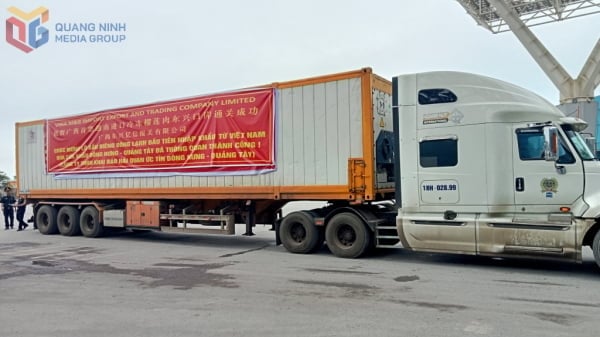
(VAN) After the talks on May 28, Vietnam successfully exported its first batch of frozen durians to China, marking a new milestone in agricultural trade cooperation between the two countries.
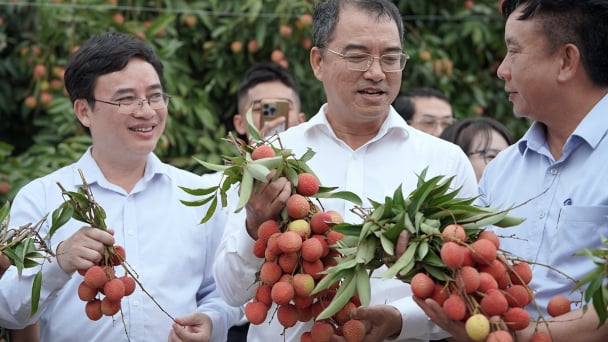
(VAN) Several major companies, such as Red Dragon and Ameii Vietnam, have signed purchasing agreements for the 2025 season, targeting markets including Japan, the United States, and the EU.
/2025/05/30/5010-5-173638_943.jpg)
(VAN) On May 29, at the GO! My Tho Trading Center, the Tien Giang Department of Industry and Trade, in collaboration with Central Retail Corporation, held the opening ceremony of the 3rd Fruit Festival 2025.
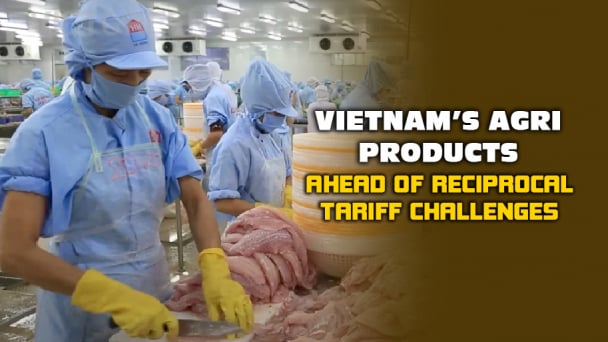
(VAN) Reciprocal tariffs are exerting pressure on U.S. exports, prompting Vietnamese firms to shift their focus to Muslim markets, Thailand, and Brazil.
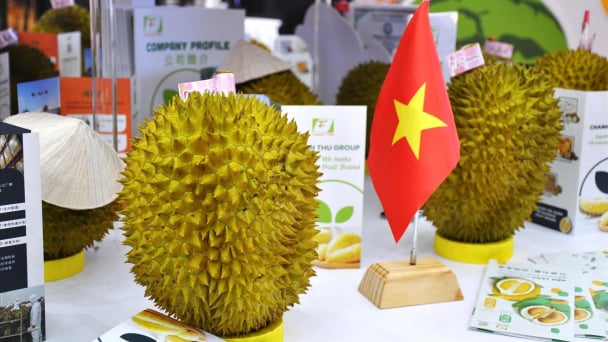
(VAN) A free booth for two years at Xinfadi, Beijing's largest wholesale market, will be allocated to Vietnam's agricultural products.
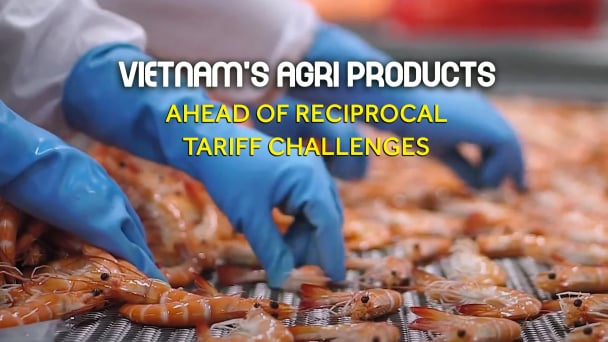
(VAN) Vietnamese shrimp exporters are actively looking for alternative markets and accelerating shipments to the United States in response to the pressure of impending reciprocal tariffs. This is occurring during a temporary tariff suspension.